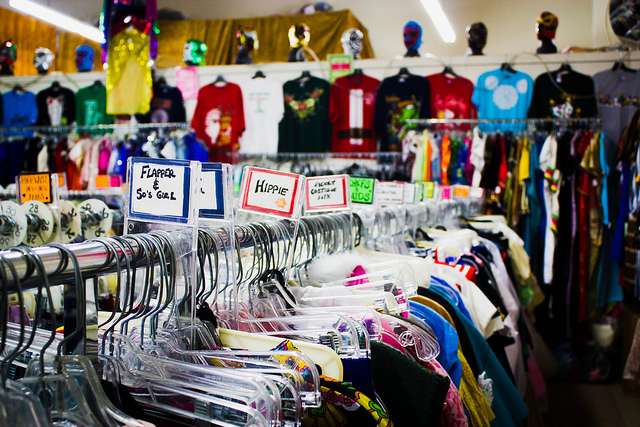50 Years of Earth Day: A Planetary AND Personal Journey
50 years ago today, Earth Day was launched as a one-time event. Who would know it would not only become annual but turn into a massive worldwide movement that has changed our world for the better in so many ways?

The Environmental Movement is Now Mainstream
Since that first Earth Day, we’ve made a lot of progress. A few examples:
- Public awareness of climate issues–and of the lifestyle changes we can make to improve things–is at an all-time high
- Millions of people have taken to the streets to demand action on climate
- Science has made huge strides in areas ranging from green energy to biomimicry; amazing new green technologies are constantly becoming more efficient, less expensive, and more deployable
- Many countries have shifted away from fossil and nuclear toward clean technoogies such as solar, wind, and hydro–and these technologies are much more efficient than they were 50 years ago
- Veganism and vegetarianism (two of the easiest ways to reduce our personal climate footprint) are far more accepted, even in places like Germany that used to be quite hostile)
- From bringing our own reusable bags (pre-COVID) to discovering foods like tofu, the way we shop and eat has drastically shifted, even for those still eating meat
- Nearly every country in the world agreed to the Paris Climate Accord (which doesn’t go nearly far enough, and which the current US administration has pledged to leave–but it’s a start)
- A 16-year-old Swedish climate activist addressed the UN, arriving in the US aboard a green-energy boat (yes, I’m talking about Greta Thunberg)
- Almost every major company has at least a sustainability coordinator, if not a whole department–and these folks have drastically reduced the negative impact of business on the environment
- Here in the US, the well-thought-out Green New Deal is getting serious attention
- We’re beginning to recognize climate justice: looking at the environment from a lens that includes economic and social justice issues, such as why so many polluting plants are in poor communities and why so many of those communities are “food deserts” with little or no access to healthy foods
My Environmental Journey Started That Day
- In 1977, I was one of about 2,000 people and 1414 who got arrested at the construction site of the Seabrook nuclear power plant in New Hampshire. We had no way of knowing that our action would birth a national safe energy movement. On the 40th anniversary, I wrote about why this action was so important. (The link is to Part 1 of my 5-part series. There’s a link to the next installment at the bottom of each earlier one.)
- In 1984, I worked with my city counselor to get the first nonsmokers’ rights regulations in Northampton, Massachusetts. Very few communities had any protection for non-smokers at that time. I don’t think it’s a coincidence that within a few years, most restaurants in town were non-smoking and that the number of restaurants in town increased significantly.
- And in 1999, I founded and became the public face of the movement that saved a mountain right near my house.
It was the success of Save the Mountain that led me into the work of educating the business community on how to be profitable while saving the world.
I hope to be able to notch a fourth victory: helping to turn the business world away from a profit-only model and toward a model of making a profit through identifying, creating, and marketing products and services that turn hunger and poverty into abundance, war and violence into peace, bigotry into strength in diversity, catastrophic climate change into planetary balance, pandemics into global health, etc. I see business as a lever for creating the world we want.
This is not new. Social impact companies have been around at least since the mid-19th century, but it’s been on the fringe. Believe it or not, UK chocolate giant Cadbury was founded as a social impact company. But I think now we have the chance to change the entire business culture, so profitable business social and environmental responsibility becomes mainstream.
But There’s Still Lots to Be Done!
For all its positive presence, business is still a long way from solving problems it largely created. Pollution, resource depletion, and labor issues are just a few of many issues that need to be addressed, especially as world population grows faster than at any time in history. And governments are not always our allies. The present Brazilian and US federal governments, for instance, are actively sabotaging the eco-agenda. Each of us needs to make the difference we can make–and each of us CAN find a way to make that difference (contact me if you want help figuring out what the most impactful way for you and your business).
No Cost Resources and MY Gift to Help You Celebrate Earth Day THIS Year
Let’s start this Earth Day party off with something that will help you save energy, water, and money–my ebook, Painless Green: 111 Tips to Help the Environment, Lower Your Carbon Footprint, Cut Your Budget, and Improve Your Quality of Life—With No Negative Impact on Your Lifestyle. I normally sell this for $9.95, but as my Earth Day gift to you, you can get it at no cost. Just visit PainlessGreenBook.com and enter “earthdayblog” in the code box. This will also sign you up to my informative Clean and Green Club monthly newsletter.
A group based near me in Western Massachusetts, Climate Action Now, offers several Earth Day events starting this evening with a 6:30 ET panel of legislators and activists. This may be especially interest if you live in Massachusetts, but it’s virtual and open to all.











